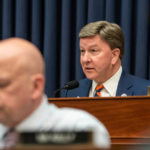
The Senate Armed Services Committee passed its version of the Fiscal Year 2015 National Defense Authorization Act in a 25-1 vote, pushing a bill to the full Senate that seems to resemble the White House’s request more than its counterpart bill in the House. The bill, though not yet released to the public, sticks to the $514 billion topline in the president’s Defense Department budget request, and it does not include an Overseas Contingency Fund placeholder, SASC Chairman Sen. Carl…











